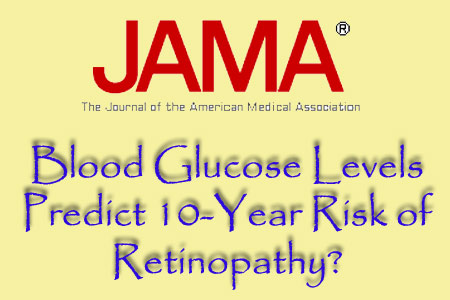
Microvascular complications like the eye condition retinopathy are apparently connected with high blood glucose levels. A recent study suggests that individuals with higher blood glucose levels and poorer control of those levels over time are more likely to develop eye-related complications 10 years later. The study findings seemingly highlight the importance of keeping blood glucose levels in check.
While conducting the study, authors evaluated the retinas of 700 men and women with an average age of 52 years. Scientists monitored every subject’s fasting plasma glucose levels and hemoglobin A1C (HbA1c, a measure of blood glucose control over time) for a period of 9 years. At the time of the study, a total of 235 participants were supposedly diagnosed with diabetes, wherein the glucose level was 126 milligrams per deciliter or higher at least once. While 227 reportedly had an impaired fasting plasma glucose level of 110 to 125 milligrams per deciliter, 238 were always with glucose levels within normal limits, that is less than 110 milligrams per deciliter.
Scientists enlightened, “Levels of HbA1c and fasting plasma glucose at baseline were related to the presence of retinopathy 10 years later, and the levels at which the positive predictive values increased provide a rationale for the choice of thresholds for the definition of hyperglycemia associated with 10-year retinopathy. We propose that thresholds of 108 milligrams per deciliter for fasting plasma glucose concentration and 6.0 percent for HbA1c level could be used to define those who are at risk of retinopathy; this is in agreement with our observation of a risk of retinopathy within the impaired fasting glucose range (fasting plasma glucose level, 110 milligrams per deciliter or higher).Factors other than glucose measures play only a minor role in retinopathy.”
Pascale Massin, M.D., Ph.D., of Hôpital Lariboisière, Paris, and colleagues classified 44 as having retinopathy, including 19 with diabetes, 19 accompanying impaired fasting glucose levels and six revealing normal glucose levels. On comparing with those without retinopathy, volunteers suffering from the condition seemingly had higher average levels of fasting plasma glucose 10 years prior and higher HbA1c. The study findings appear extremely crucial in the health terrain.
The study is published in the February issue of Archives of Ophthalmology, one of the JAMA/Archives journals.

